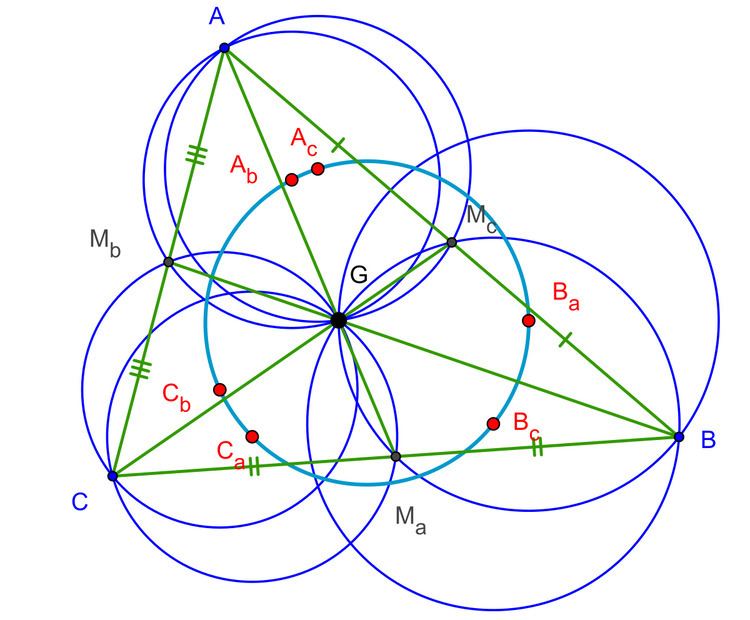In Euclidean plane geometry, the van Lamoen circle is a special circle associated with any given triangle T . It contains the circumcenters of the six triangles that are defined inside T by its three medians.
Specifically, let A , B , C be the vertices of T , and let G be its centroid (the intersection of its three medians). Let M a , M b , and M c be the midpoints of the sidelines B C , C A , and A B , respectively. It turns out that the circumcenters of the six triangles A G M c , B G M c , B G M a , C G M a , C G M b , and A G M b lie on a common circle, which is the van Lamoen circle of T .
The van Lamoen circle is named after the mathematician Floor van Lamoen who posed it as a problem in 2000. A proof was provided by Kin Y. Li in 2001, and the editors of the Amer. Math. Monthly in 2002.
The center of the van Lamoen circle is point X ( 1153 ) in Clark Kimberling's comprehensive list of triangle centers.
In 2003, Alexey Myakishev and Peter Y. Woo proved that the converse of the theorem is nearly true, in the following sense: let P be any point in the triangle's interior, and A A ′ , B B ′ , and C C ′ be its cevians, that is, the line segments that connect each vertex to P and are extended until each meets the opposite side. Then the circumcenters of the six triangles A P B ′ , A P C ′ , B P C ′ , B P A ′ , C P A ′ , and C P B ′ lie on the same circle if and only if P is the centroid of T or its orthocenter (the intersection of its three altitudes). A simpler proof of this result was given by Nguyen Minh Ha in 2005.

